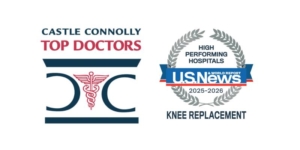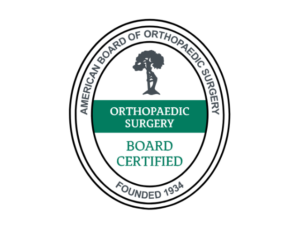Symptoms of Wrong Size Knee Replacement
What Else Could be Wrong?
Total and partial knee replacement surgeries are both wonderfully powerful and commonly performed surgeries that can relieve pain, correct deformities and restore function. Sadly, some patients still have pain or instability after a knee replacement due to improper sizing or placement of the components. Occasionally after I evaluate someone who is unable to fully flex or extend their knee, they ask me if their knee is “too big”. I’ve had other patients complain that their knee is “loose” or “feels unstable” and inquire if the parts are “too small”. The answer to both of these questions is sometimes YES. But it is not the whole picture.
A knee replacement resurfaces the arthritic end of the bones that move across each other (femur, tibia and patella) with a prosthesis. The goal is to realign the knee like it was before it became arthritic, and to balance the soft tissues that support and guide the knee through its complex motion. When each of these conditions is done perfectly, “like a symphony”, these patients have the most consistent and best results. And they are the happiest.
Choosing the correct size components, implanting them on the bone to correct any angular deformity (knock knee, bowleg, flexion contracture, or sway back), and orienting the components so they rub against (articulate) each other perfectly while reestablishing optimal physiological tensions in the supportive soft tissues is difficult to do consistently. Experience combined with computer navigation and robotics has been a game changer.
If the gap or separation between the femoral and tibial component is too tight or small as the knee extends then the knee is prevented from fully extending. If the gap is too tight in flexion, then full flexion is prevented. If the knee can’t fully extend or flex, then both flexion and extension gaps may be too tight and we sometimes refer to these knees as “over stuffed”. This can be due to the size or position of the femoral component, the position of the tibial tray or the thickness of the plastic insert. If the “extension gap” is too loose, the knee can feel wobbly, unstable, and develop sway back deformity (recurvatum) . Patients with loose flexion gaps often achieve excellent flexion but often don’t feel stable or comfortable. Sometimes they complain that their knee wobbles from side to side when flexed, which can cause inflammation, accelerated plastic wear, and instability. All of these conditions can lead to pain.

Picture from Balancing TKA – Hip and Knee Book
If the PCL (posture cruciate ligament) is retained but too tight, flexion is limited and often associated with pain. If the PCL is too loose, the tibia falls backward on the femur during flexion which can cause discomfort. These patients often report more difficulty descending stairs with complaints of weakness and pain than when climbing up stairs. Some types of total knees substitute for the PCL. They are built with a relief in the femoral component that accommodates a cam in the plastic insert. Sometimes patients develop irritation in the overlying extensor mechanism, resulting in inflammation with entrapment and can be a source of pain.
The femoral component must be perfectly oriented to the tibial component so the foot points forward in a natural way, and the knee cap with its patella component (a button of plastic that is implanted on the underside of the knee cap) moves centrally in the groove of the femur. Patients sometimes complain of “band like pain” around their knee replacement which can be a clue that this orientation isn’t optimal and their soft tissue sleeve is not balanced and feels twisted. This may also result in the patella not tracking centrally down the groove in the femur (trochlea) or even dislocate.
If the thickness of the patella is increased after implanting the patella button, the forces between the patella and femur increase during flexion and can cause pain. If the thickness is decreased, the mechanical lever arm is shortened, then this person may experience weakness with knee extension, such as getting up from a seated position or climbing stairs. If the patella button is too small, the non-re-surfaced patella bone can rub against the femur and cause pain.
If any of the components (femur, tibia, or patella button) are too large and over-hang the natural contours of the bone, then soft tissues can rub on it and cause pain.
Yes, sometimes the implanted prosthesis is not optimally sized (too big or too small) which can cause problems, but sizing is just one of the many variables that goes into achieving a great result after knee replacement. If you are not doing well and not happy with your result, then I suggest returning to your surgeon to help you figure out why not. If they are not able to help you, consider a “second opinion” with another orthopedic surgeon, preferably an individual who specializes in complex knee replacement problems.
We thank you for your readership. If you would like a personal consultation, please contact our office at 954-489-4575 or by email at LeoneCenter@Holy-cross.com. The Leone Center for Orthopedic Care at Holy Cross Health is located at 1000 NE 56th Street in Fort Lauderdale.





